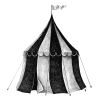“The Son is THE Image of the Invisible God.” St Paul
There is much art. The universe is art. Then there, is THE image of God. The truest poem of Himself. This is The Son. God’s greatest art, the exact representation as Paul later puts it. All art is derivative and in comparison to this highest art–The Son, Jesus, The Christ. If we look at Jesus Himself as the highest standard through which we filter and judge all art, aesthetics becomes a meditation on who He is. When we look at or create art, and collectively, when we look at culture itself, He is the backdrop always. Metaphysically He stands in Person behind the thing we are creating or beholding. That is the spiritual practice of aesthetics.
Martin Buber did this in his aesthetic practice with The Father. What Paul is suggesting is that The Son, being the very incarnation of God, is the tangible One we are dialoguing with in the creative process. He clarifies our vision, directs us into the true lines of our work, and purifies our symbolic understanding.
If we seek to define or understand art, this is the starting place. The image of God who is Jesus. Our living relationship with The Image, is what allows us to come closer to finding true image both in creating art, and viewing art; when we are looking at Him, we are in visual dialogue with The Origin of Image itself. There is no higher way to know art.
As we create, or view art, we are in active dialogue with The Image. The exact representation informs our broken meditations, and we are coming to know Him through our artistic activities.This is the function of art, as it is with whatever we throw our focus into–as a medium to come to know God.
In short, the way to see is to look at Him through everything, including arts and culture. Look until you see Him, and filter and interpret it all from that vision. “For in Him, all things hold together.”
